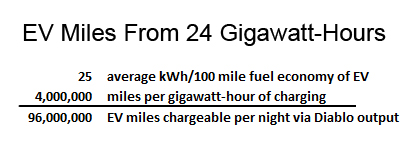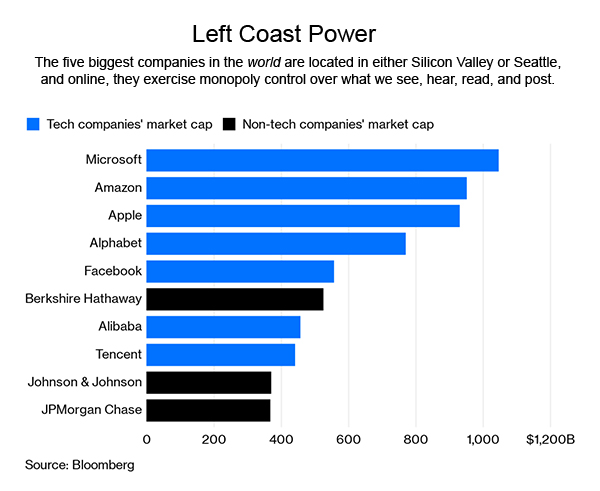The Democratic Washing Machine
What on earth could this be referring to? Is it a metaphor? Is it to say the Democrats and their social justice cadres are washing away our history and traditions and culture? Is it conjuring the image of Democrat machine politics, selectively laundering corruption into barely legal schemes, backed by avaricious billionaires? Maybe it’s the Democratic media, brainwashing America’s gullible half?
No. Nothing so grand. The Democratic Washing Machine is just that. A washing machine. The sort of washing machine you’ll find on the display floors of retailers throughout California, coming soon to your state. An overengineered monstrosity, inflicting inconvenience and expense into something that for earlier generations had become easy and cheap.
The Democratic Washing Machine is so named because it was Democrats who decided to ruin a durable product in a mature industry. In the name of saving electricity and saving water, they couldn’t save just a little electricity and a little water. No, they had to force manufacturers to create a product that used almost NO water. And to save electricity, they turned the control panel on the washing machine into something resembling the bridge of a starship, with so many options you have to study a detailed manual to figure out how to even turn the device on. Do you want it to delay it’s start cycle to wait for a low electricity price today? Select option 7 from menu 3 unless it’s after 6 p.m., wherein you will select blah, blah, blah, blah, blah, blah, blah…
Who came up with this crap? A Democratic Washing Machine in its default setting can take over an hour to do a single wash cycle, assuming you have successfully overrode its programmed predilection to connect to the internet and check the spot price of electricity before starting.
The Democratic Washing Machine is side loading instead of top loading, because that will save a few gallons of water, but your clothes flop around inside a drum that’s on a horizontal axis. Clothes get damaged and they don’t get very clean, and you have to get onto your knees on the floor to load and unload them, but hey, if you do this, the ice caps won’t melt, right?
Some especially overengineered Democratic Washing Machines, presumably taking their inspiration from the V-22 Osprey tilt-rotor aircraft, are top loading, and then once the lid is shut the drum rotates 90 degrees to establish that water sipping horizontal axis. Flop flop flop. But unlike a V-22 Osprey, the Democratic Washing Machine – although absurdly expensive – is not engineered to MilSpec standards. Things break. Better buy a warranty.
Did someone say “warranty”? How quaint. We don’t purchase washing machines anymore. We “subscribe” to our washing machines. This way, as the greenie/techie axis comes up with more “innovations,” the lucky consumer can install the new module, or receive an entire new unit. Sometimes upgrades can be remotely downloaded onto the platform (oops, “washing machine”), because we all know that washing machines need to be filled with chipsets and firmware and connected to the internet!
What is this madness? Since when was it in the interests of consumers to use washing machines that are confusing to operate, difficult to load and unload, do a poor job washing clothes, damage clothes, break down every few months, and inflict lifetime costs many times what legacy machines cost?
Blame the Democrats.
Yes, there is a Republican Washing Machine. Do you remember those television commercials showing a Maytag repair technician, sitting at an empty workbench in his shop, surrounded by shelves filled with unneeded spare parts, bored out of his wits? That was a rare example of honesty in advertising. Because in response to foreign competition, but before the Democrat coalition of greenies and techies got out of control, washing machines were built to last. Not for three years, or even ten years, but for thirty years or more.
The Republican Washing Machine takes 20 minutes to do a wash cycle instead of 60 minutes, it starts when you push the “start” button, it doesn’t take several seconds to “boot” its software systems because it doesn’t have any software systems, it’s lid is on the top so you don’t have to be a contortionist to load and unload it, it does a good job washing clothes, it doesn’t cost much, and it lasts forever.
Why? Because Republicans don’t try to micromanage our lives. Because Republicans don’t have the audacity to hide behind trial lawyers working for environmentalist mega-nonprofits and grasping high-tech “entrepreneurs” who want to force people to buy their components so they can get even richer.
The Democratic Washing Machine may not be a metaphor for liberal attempts to erase and rewrite our history, or for crooked machine politicians, or for the brainwashing media, but it is nonetheless a metaphor. It represents every overwrought, “wired,” overcomplicated product that’s being crammed down our throats. Ostensibly to save the planet, but actually merely to pad corporate profits with the support of Democratic politicians.
It has its counterparts everywhere.
Faucets that you have to wave your hands in front of to turn them on, wherein (maybe) they will issue eight thin, 1 mm diameter jets of water that can’t possibly rinse away soap, wherein they’ll stop after a few seconds and you have to start waving your hands in front of them again.
Light switches that look like a cell phone menu instead of a simple mechanical on/off switch, that once you’ve figured out how to turn them on, they turn off automatically after a few minutes unless you find the right option to disable that feature. Yes. These types of light switches are now required by law in new construction in counties throughout California.
And of course never forget that the Democratic Washing Machine is not only “washing” your clothes, it’s watching you. Collecting data designed to “help” you live a more productive and earth-friendly life. Expect a smart and observant Democratic Toilet in the near future.
Never mind that ALL indoor water used is by definition impossible to waste, since it flows to a treatment plant where it is either discharged right back to a river ecosystem or aquifer, or it is further treated and pumped right back uphill. What an inconvenient truth!
The sad fact is we could build appliances today that use the latest innovations to cut back on water and energy consumption without having to go to extremes, that are easy to use, that last even longer than the legacy products, and cost less. But we choose not to.
Blame the Democrats.
It’s time to push back, hard, against products that put consumers through these absurdities. Hang onto your legacy appliances. Call your appliance repairman. Maintain what you’ve got, because you surely will miss it when it’s gone.
This article originally appeared on the website American Greatness.
* * *

Edward Ring is a contributing editor and senior fellow with the California Policy Center, which he co-founded in 2013 and served as its first president. He is also a senior fellow with the Center for American Greatness, and a regular contributor to the California Globe. His work has appeared in the Los Angeles Times, the Wall Street Journal, the Economist, Forbes, and other media outlets.
To help support more content and policy analysis like this, please click here.






